We spent Father’s Day weekend on Nevis. While we did get to see the birthplace of Alexander Hamilton, the anchorage was rolly and loud – never a good combination for getting sleep. We did get to visit Sunshine’s Beach Bar to try the Killer Bee-thanks Sally for the suggestion! We departed early on Monday morning to head to Montserrat. We arrived Monday afternoon and radioed the port authority to get cleared to enter. The officer shared with us that we actually arrived on a national holiday, the celebration for King Charles’ birthday! Who knew? We were able to still clear in and then raise a glass in toast to the King as we settled in for the evening!



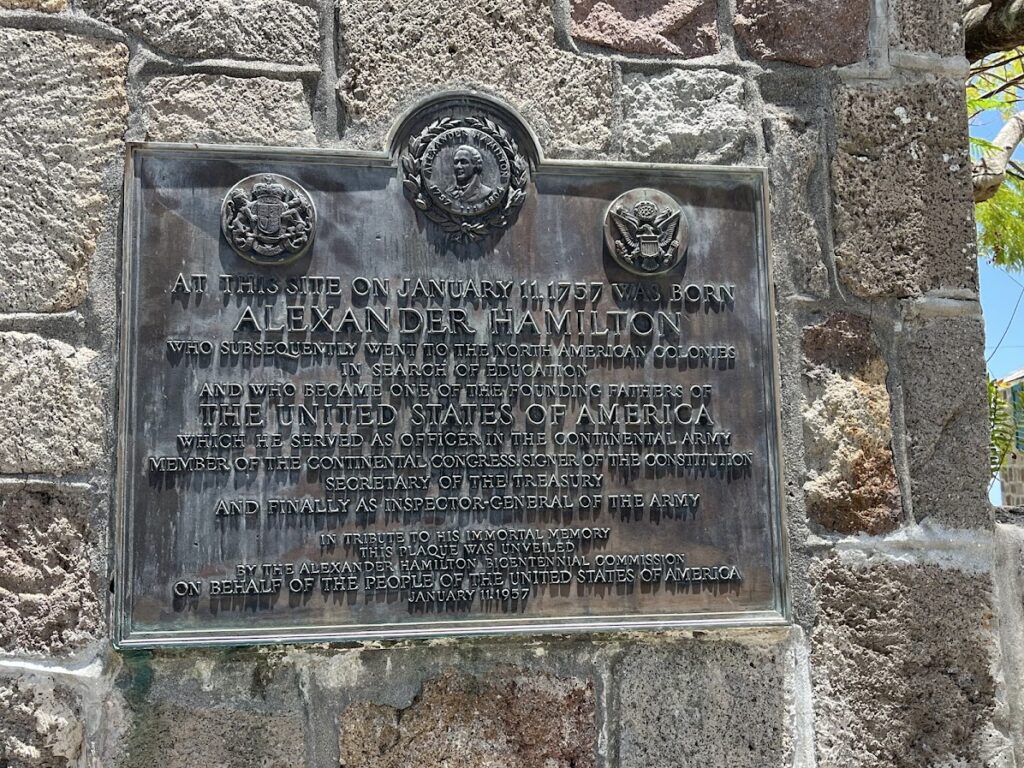
Montserrat was a bucket list item for Bob – he was very intrigued by the chance to visit a country with an active volcano. I was excited too but had to do a little reading to learn more. I vaguely remembered that they had an eruption in the 90’s but couldn’t remember the details. On 18 July 1995, the previously dormant Soufrière Hills volcano in the southeastern part of the island became active and eruptions destroyed Montserrat’s capital city of Plymouth. Between 1995 and 2000, two-thirds of the island’s population was forced to flee, mostly to the United Kingdom, leaving fewer than 1,200 people on the island in 1997. The population has slowly regrown to about 5,000 people. The volcanic activity continues, mostly affecting the vicinity of Plymouth, including its docks, and the eastern side of the island around the former W. H. Bramble Airport, the remnants of which were buried by flows from further volcanic activity on 11 February 2010. There is an active observatory, the Monserrat Volcano Observatory (MVO) that constantly monitors the volcano. They post the hazard level daily as part of their work. An exclusion zone was imposed, encompassing the southern part of the island because of the size of the existing volcanic dome and the resulting possibility of pyroclastic activity. This includes both the land and the sea surrounding the southern part of the island. Since 2014 the area has been split into multiple subzones with varying entry and use restrictions, based on volcanic activity. The most dangerous zone, which includes the former capital, remains forbidden to casual visitors due to volcanic and other hazards, especially due to the lack of maintenance in destroyed areas. It is legal to visit this area when accompanied by a government-authorized guide only and requires advance planning and can be quite expensive.
We booked a tour for Tuesday with a guide recommended by other cruisers. We met Cecil at 9am and it was quickly apparent how much he loves his country and that he wants to share it with others so they will love it too. He was born and raised in Monserrat and was thankfully living in the northern part of the country when the volcano erupted in 1995. He shared some stories with us of how even in the North, they had volcanic ash and stones fall during that time. He had family members who lost everything due to the volcano and had to relocate, some to Britain and some to other British territories in the Caribbean. There was no insurance that covered the losses as the eruption was categorized as an “Act of God” so it was devastating to many families. But despite all this, the population has rebounded to 5,000 so some people who left have returned.
Our first stop was at the Monserrat National Trust to get a quick overview of the history. They had pictures and newspaper clippings showing Monserrat before and after the 1995 eruption so it was a good place to get a sense of what it looked like before the devastation. We left there and continued to head south but Cecil quickly pulled over to the side of the road. We needed to stop at Runaway Ghaut. Runaway Ghaut, which bisects the town of Olveston, is one of only four ghauts in Montserrat with a permanent flow of rainwater. Local legend claims that those who drink right from the ghaut are destined to return to Montserrat, should they ever leave the island. Bob and I had our drink so we will see if we are fortunate enough to return!
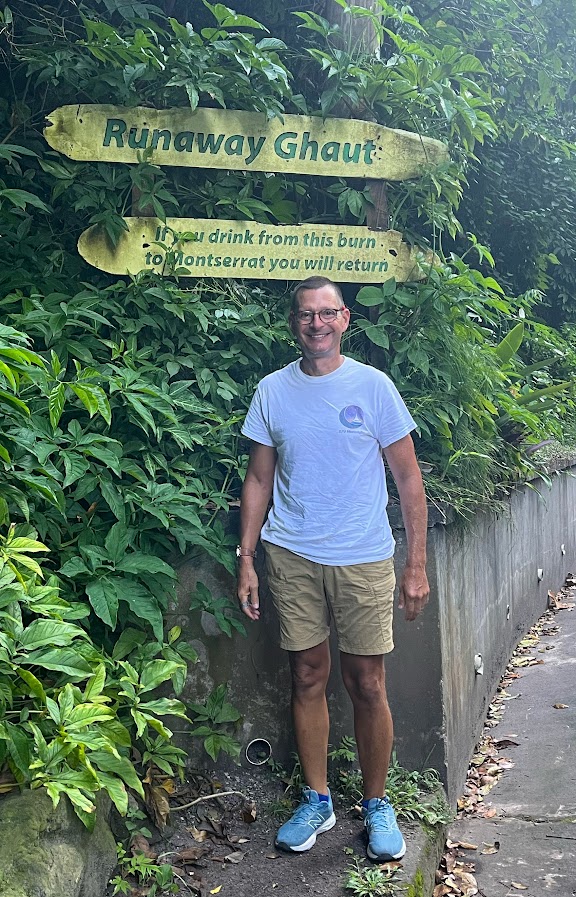
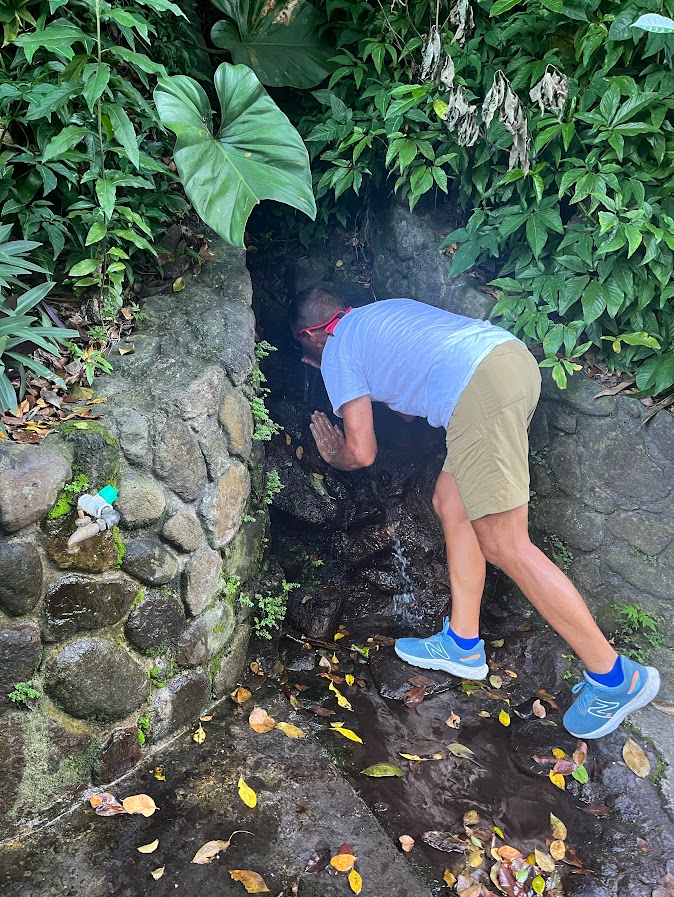
Back on the road, our next stop was the Monserrat Volcanic Observatory. While this is a working observatory, it has a viewing platform that offers unobstructed views to the volcano and has some displays inside as well for visitors. Unfortunately they were having a meeting inside so we could not see the displays or movie but we were able to utilize the viewing platform and get some pictures.
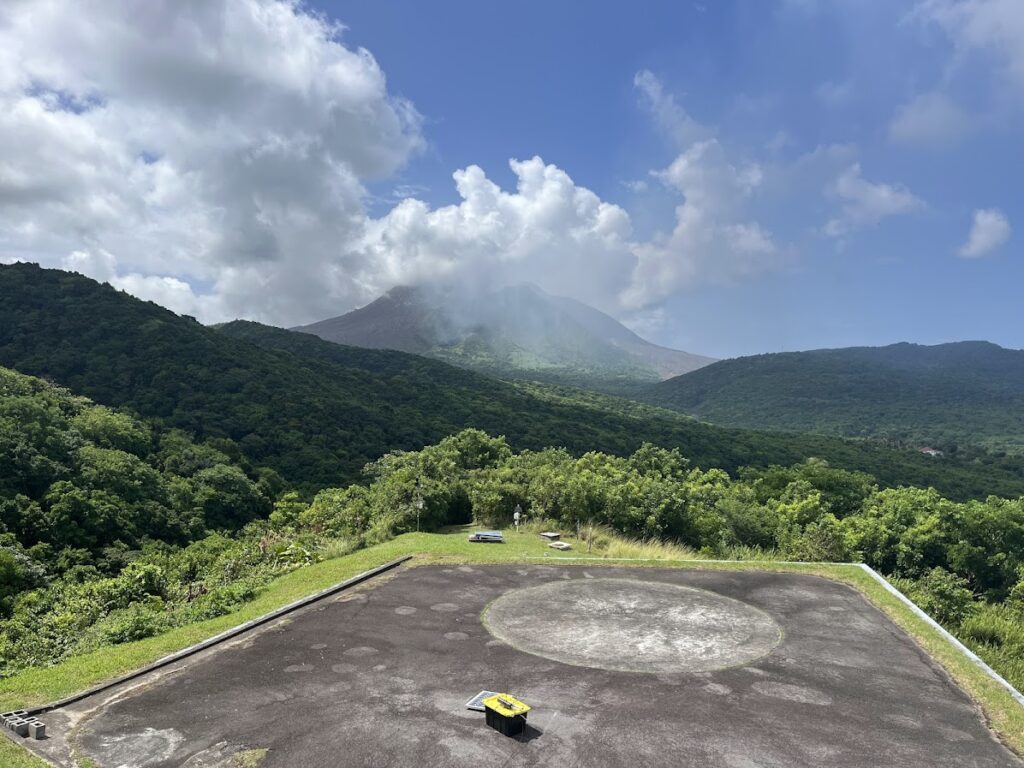
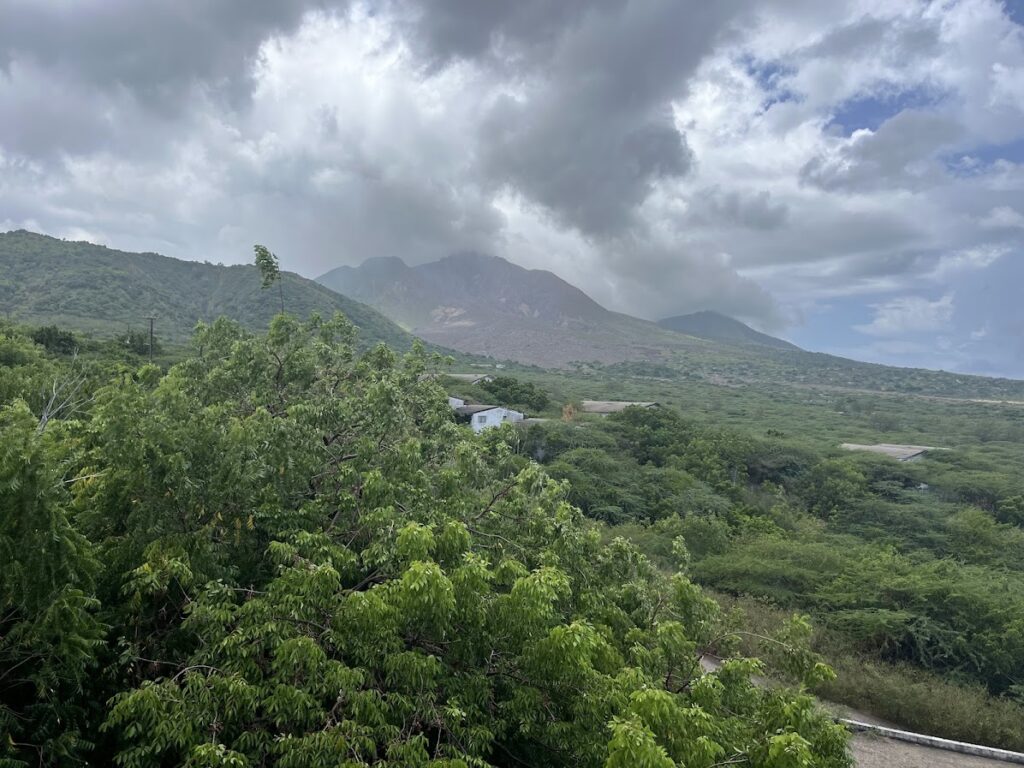
We then began our descent down into the exclusion zone. While we had not planned ahead to get a permit to actually visit Plymouth, our guide was able to take us to parts of the zone and to visit a hotel that had been devastated by the eruption. As we continued to drive, the road definitely deteriorated. We began to see some of the vacant houses, some that had been multistory but had collapsed down on themselves. As we drove further we also saw the current mining operation. Around 2010, sand mining began in the island’s exclusion zone – the area most at risk from volcanic activity where people are no longer allowed to live. It is a large operation, we saw a lot of equipment and huge piles where they have sorted sand, ash, and rock. Cecil was actually quoted in an article talking about the mining operation: “The sand mining operation is something that I think is good for the country,” Wade said while pulling over to let a truck pass on the road running along Plymouth’s ruins. “It needs to be controlled more by the government so that more people can benefit. But I think it’s something viable because we don’t export anything, we don’t grow anything, we don’t have factories that produce anything. We are fortunate that the volcano provides us with the sand that we can send to other countries, but I think it just needs to be controlled at a larger scale so that more people can benefit from it.”
We continued on past the mining operation and stopped to explore the former Monserrat Springs Hotel. In its heyday it was quite exclusive, with many famous recording artists who came to record in the famous AIR Studios owned by legendary Beatles producer Sir George Martin staying there including the Rolling Stones! This was where we got to see first hand the volcanic ash that covered Plymouth. The layers of ash were everywhere from the main reception area to the individual hotel rooms. It was even thicker on the bottom level- some parts unpassable. It was almost a bit eerie to see the remains of stray hangers, hotel lamps, a check in book and the slots for room keys at the reception area. From there we could look into the distance to Plymouth and see where the pyroclastic flow traveled. It frankly feels a bit unreal how much devastation it created. What is more unreal is the resilience of those who stayed on the island after the eruption or have since returned. Half of their island is basically unusable and they still have the threat of an active volcano in their midst but yet the island and its people are trying to rebuild tourism is a testament to their fortitude. Cecil actually had a great perspective and ability to find the silver lining amidst the tragedy. He shared that since the eruption, they have had more support from Britain and actually all the islanders were given full British citizenship and passports. He also counted the sand mining and its associated jobs as a positive as well as the building of the new port. He is hopeful that the new port will also help increase tourism for the island. It was great to hear him talk and we so appreciated the time he took to share his island with us.
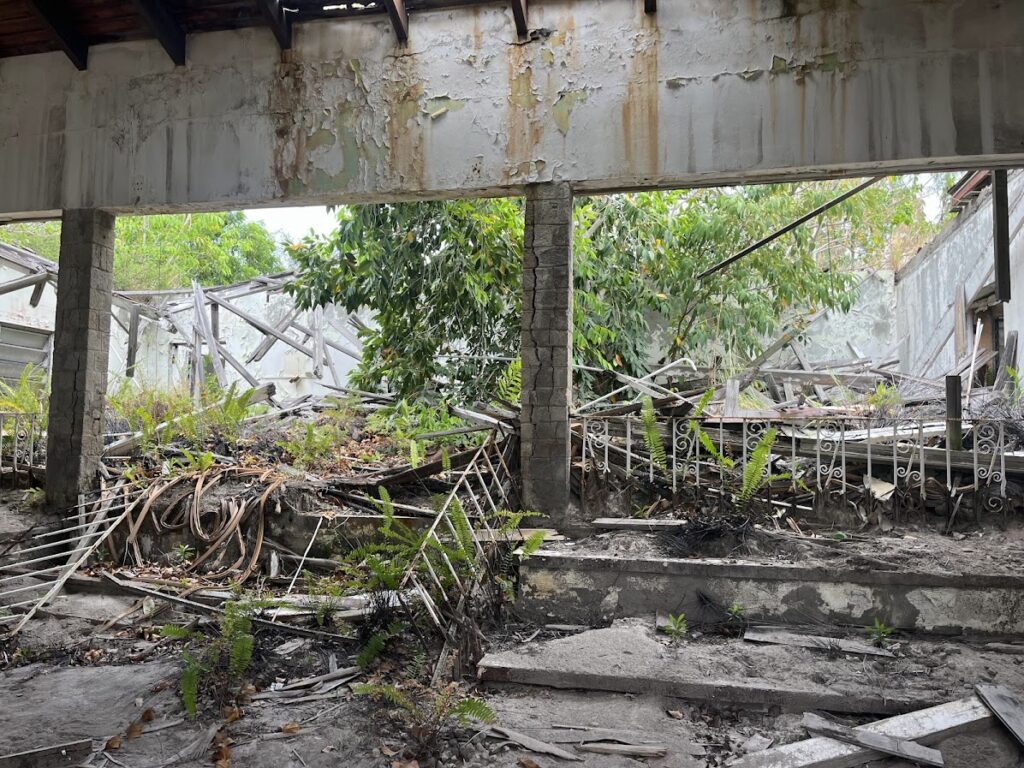



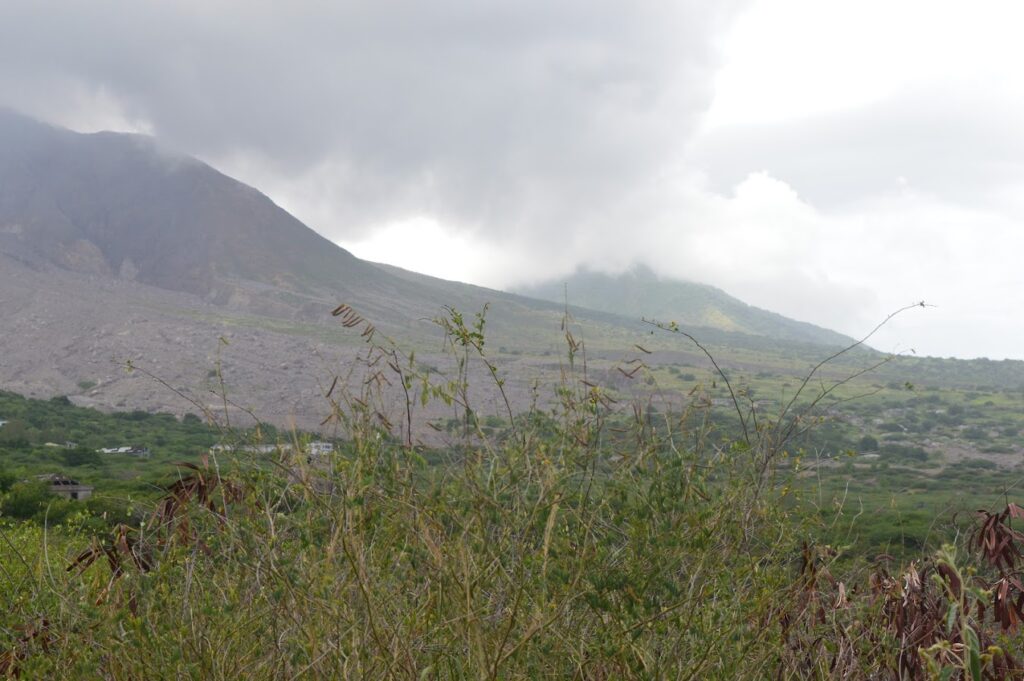
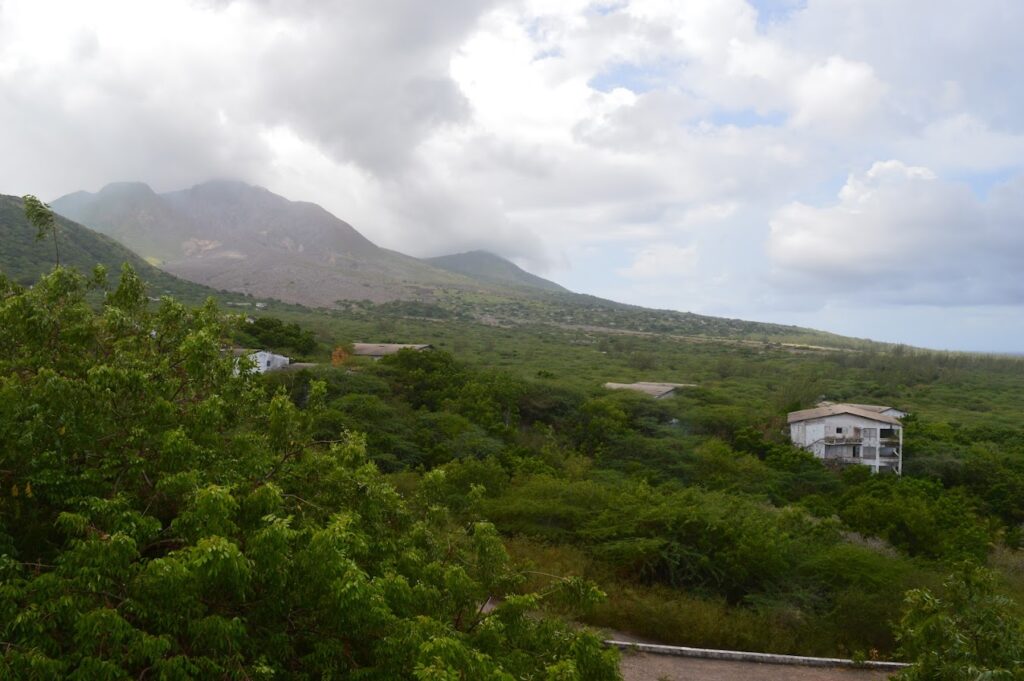
We feel very glad we made the decision to visit Monserrat and hope we will be fortunate enough to return in the future!
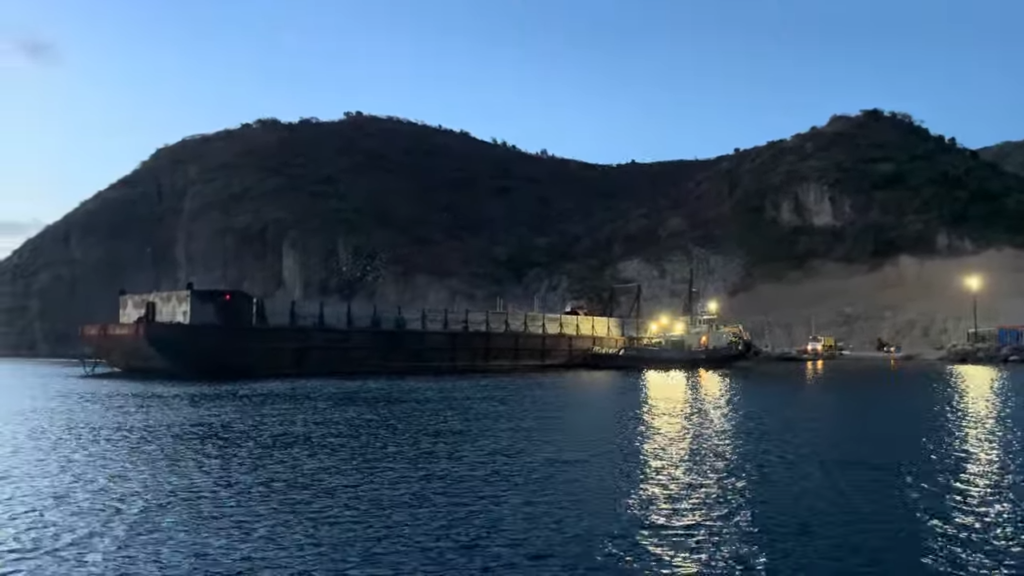
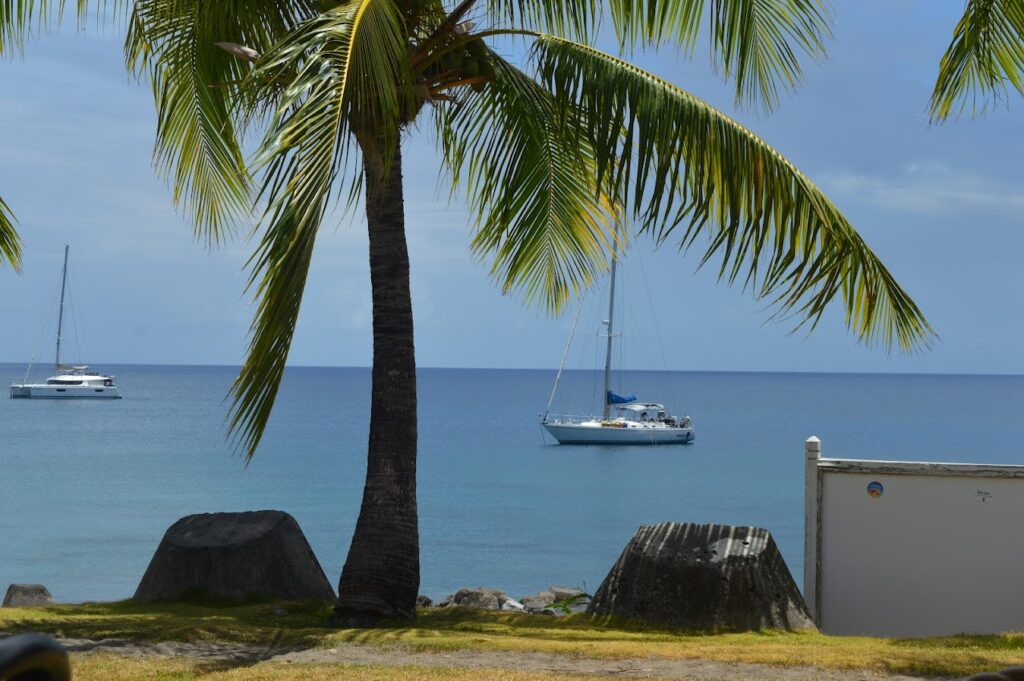

June 20, 2024 at 9:15 pm
Great pictures and narrative once again. Thanks for sharing your adventures.
June 21, 2024 at 11:48 am
Thanks for the education! I remember watching a music related video/movie about the music that was recorded there back in the 60s, and had no idea the island had since had so much destruction. Very sad.
Happy Sailing!
Ellen
June 22, 2024 at 5:25 pm
Fascinating!!! Enjoying reading about your travels!